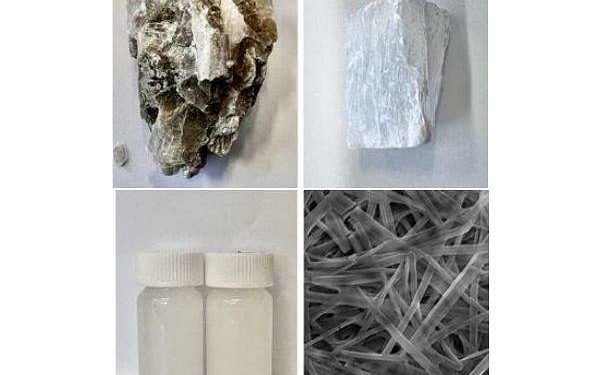
Sussex research takes us a step closer to sustaining human life on Mars
by Staff Writers
Brighton UK (SPX) Dec 21, 2023
Researchers at the University of Sussex have discovered the transformative potential of Martian nanomaterials, potentially opening the door to sustainable habitation on the red planet.
Using resources and techniques currently applied on the International Space Station and by NASA, Dr Conor Boland, a Lecturer in Materials Physics at the University of Sussex, led a research group that investigated the potential of nanomaterials – incredibly tiny components thousands of times smaller than a human hair – for clean energy production and building materials on Mars.
Taking what was considered a waste product by NASA and applying only sustainable production methods, including water-based chemistry and low-energy processes, the researchers have successfully identified electrical properties within gypsum nanomaterials – opening the door to potential clean energy and sustainable technology production on Mars.
Dr Conor Boland, said: “This study shows that the potential is quite literally out of this world for nanomaterials. Our study builds off recent research performed by NASA and takes what was considered waste, essentially lumps of rock, and turns it into transformative nanomaterials for a range of applications from creating clean hydrogen fuel to developing an electronic device similar to a transistor, to creating an additive to textiles to increase their robustness.
“This opens avenues for sustainable technology – and building – on Mars but also highlights the broader potential for eco-friendly breakthroughs here on Earth.”
To make the breakthrough the researchers used NASA’s innovative method for extracting water from Martian gypsum, which is dehydrated by the agency to get water for human consumption. This produces a byproduct called anhydrite-considered waste material by NASA, but now shown to be hugely valuable.
The Sussex researchers processed anhydrite into nanobelts – essentially tagliatelle-shaped materials – demonstrating their potential to provide clean energy and sustainable electronics. Furthermore, at every step of their process, water could be continuously collected and recycled.
Dr Boland added: “We are optimistic of the feasibility of this process on Mars, as it requires only naturally occurring materials – everything we used could, in theory, be replicated on the red planet. Arguably this is the most important goal in making the Martian colony sustainable from the outset.”
While full-scale electronics production may be impractical on Mars due to the lack of clean rooms and sterile conditions, the anhydrite nanobelts hold promise for clean energy production on Earth, and could, later down the line, still have a profound effect on sustainable energy production on Mars.
Research Report:Quasi-1D Anhydrite Nanobelts from the Sustainable Liquid Exfoliation of Terrestrial Gypsum for Future Martian-based Electronics
Related Links
University of Sussex
Mars News and Information at MarsDaily.com
Lunar Dreams and more
